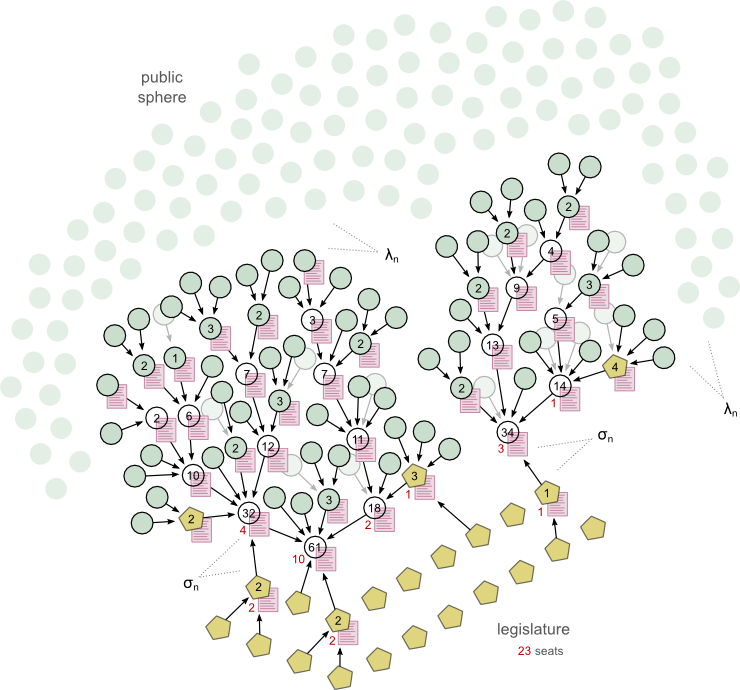Stuff:Votorola/p/nL:Guidance of legislation
Guidance of legislation requires a draft text in the form of a bill, bylaw or ordinance appropriate for the assembly that has jurisdiction in the issue. Separately it also requires a continuous, open primary election for the same assembly. Legislative and electoral guidance are interrelated, but their primaries run separately in parallel. This page describes the legislative side. It is divided roughly into two phases: a primary phase in which the public seeks agreement on a text, followed by a decisive phase in which the assembly promulgates that text as a law.1
 |
Assembly members are expected to have a strong motive to participate in the primary drafting effort, especially in the latter stages after a rough consensus has emerged. Primary drafters and primary electors are usually the same people, the most productive of whom are also rival candidates for the members' seats. Any member who stood aloof from the effort, or voted against a consensus of her electors without a good explanation, would immediately begin to lose primary electoral votes to her more attuned rivals. For these and other professional reasons, assembly members are expected to participate in increasing numbers once a rough consensus on the issue has emerged. Their participation reveals the effect of guidance, and the nearness to decision. A separate tally of the in-house votes (red in figure) tracks the likelihood of the text's passage should it be introduced. Caution on the part of uncommitted members may cause some delay here. Should the tally ever indicate the likelihood of a majority, however, the only remaining hurdle will be to complete the text while holding onto that majority and the public consensus that backs it. Here the decision and timing rest with an in-house committee, individual member or external executive, depending on the assembly rules. The completed text is then introduced to the floor, voted by the members, and (if it passes) promulgated into law. Prudent members may then withdraw their primary votes and await further developments in public, as the law may require revision.
See also
- /GL - Figure template
Property settings
Notes
- ^ See also Stuff:Broad-based decision guidance.
- ^ Primary turnout (number of participants in the guideway) would often be much larger in practice. Further a typical candidate (e.g. hollow circle) would likely have a larger number of direct voters, making the trees much bushier than shown.
- ^ Guidance from the legislative primary enters the assembly across the system gap as described here.